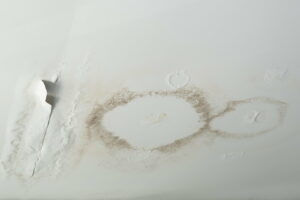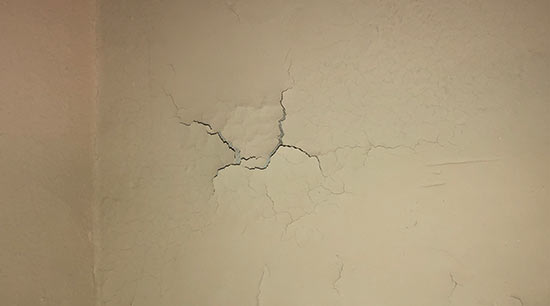Detecting Water Stains on Walls - Techniques to Address Them Satisfactorily
Detecting Water Stains on Walls - Techniques to Address Them Satisfactorily
Blog Article
We have discovered the article on How to Find and Repair Water Leaking in the Wall down the page on the web and accepted it made sense to talk about it with you on this site.

Water discolorations on wall surfaces are not pleasurable to the eyes. Your house should lack spots on the walls, roof covering, or floors. That is the optimal state of a home and also its frameworks. Yet, in some cases it appears nearly unavoidable to experience water discolorations on walls in houses.
Home owners living in humid areas frequently deal with the worry of water stains on wall surfaces. That doesn't have to be the instance for you. With precise as well as well-rounded information on the sources of water discolorations as well as timely repair work processes, you will certainly always be a step ahead of such events. This short article assures to be a valuable guide for you.
3 Typical Reasons For Water Spots on Wall Surfaces
Unlike popular belief, water stains on walls do not always come from inadequate structure products. There are numerous causes of water stains on walls. These include:
Poor Drainage
This will certainly prevent water from permeating into the walls. This links to too much moisture that you discover on the walls of your structure.
The leading reason of damp wall surfaces, in this instance, can be a bad water drainage system. It can likewise be due to bad management of sewage pipelines that go through the building.
Damp
When hot damp air meets with dry cold air, it causes water beads to base on the walls of buildings. When there is vapor from cooking or showers, this takes place in washrooms and also kitchens. The water droplets can discolor the surrounding walls in these parts of your home as well as infect various other locations.
Wet or condensation influences the roof and walls of buildings. This triggers them to appear darker than various other locations of the house. When the wall is wet, it creates an appropriate environment for the development of fungis and also microbes. These might have adverse effects on health and wellness, such as allergies and breathing conditions.
Pipe Leaks
Most homes have a network of water pipes within the wall surfaces. This makes certain that the pipelines are faraway from the reach of damaging rodents. It constantly increases the feasibility of such pipes, as there is little oxygen within the wall surfaces. This discourages rust.
Yet, a disadvantage to this is that water leakage affects the wall surfaces of the building and creates widespread damages. An indication of damaged pipelines is the look of a water stain on the wall.
Water Stains on Wall Surface: Repair Tips
When dealing with water stains, homeowners would typically want a fast solution. Yet, they would certainly quickly understand this is disadvantageous as the water discolorations recur. Here are a couple of practical suggestions that will assist you in the repair of water stains on wall surfaces:
Pro Tip
A houseplant in your home additionally boosts its humidity. If the residence is already humid, you might want to present houseplants with minimal transpiration. An instance of appropriate houseplants is succulents.
Final thought
Although no one intends to have water stains on walls in their residence, it can occur to the best people. This article offers you leverage, as you currently know exactly how to manage this mishap if it does happen.
It is always best to recruit specialist services to aid fix the problems in your home.
Occasionally it seems virtually unavoidable to experience water discolorations on walls in houses.
In contrast to prominent idea, water spots on wall surfaces do not always stem from bad structure materials. There are a number of reasons of water stains on walls. The water beads can stain the bordering wall surfaces in these parts of your house and also spread to various other areas.
Right here are a couple of practical tips that will assist you in the fixing of water stains on walls:
What To Do About A Water Stain On The Ceiling
Why This is Important
Not only are water stains a cosmetic issue, but they can also indicate that there is a leak in the home that needs to be fixed. Sometimes, this may be the first indicator of a bigger problem brewing or may have been a one time leaky issue. It is important to investigate to make sure it is under control before you possibly have thousands of dollars in repairs.
Identify the Cause of the Water Stain on the Ceiling and Where to Start
It is important to identify the cause of the water stain on the ceiling first so you can fix it. Start first with the roof to see if there are leaky shingles or missing shingles, missing flashing, or weakened seals around roof vents. You may need to get on top of the roof to look or call a professional to check for you. It is possible that water is coming into the home from the roof. So you will want to have the professional take a look to see if this is the issue.
Also, look in the attic to see if there is a pool of water and that will also help you to know if there is water leaking into the home.
Radiator or Air Handler on 2nd floor
In colder parts of the country, there may be a radiator on the second floor. Radiators are used to keep rooms warm in the cold months and do wear out or need replacing. Does the radiator have a pool of water underneath it or any dripping? If yes, this could be the problem and causing the water stain on the ceiling. Check the model of the radiator and see if it is something you can do yourself or call a professional to check the body, pipe, and the valve for leaks.
The same is true for those who have an air handler on the second floor. Did your AC stop working? Or do you see water leaking? The drip pan (if you have one) on an HVAC unit collects the water and it can become clogged and back up. The float switch (again, if you have one) will activate as soon as the water reaches a certain level and shut down the HVAC unit, thus not allowing the water to continue to flow. Make sure the HVAC doesn’t become clogged and checking this monthly is a good idea.
Upstairs Bathroom Can Cause a Water Stain on the Ceiling
Bathrooms are often the culprit as caulking wears out after about 10 years and needs replacing. Is the home older than 10 years? This may be the issue. While checking the caulking in the bathroom around the sinks, toilets, and shower/bath, also check for black mold in the shower. Might as well rule everything out while you are looking for the source.
Other areas to look at are toilets clogging and overflowing. Do you see water near the toilet on the floor? This could be the seal is broken on the toilet and it needs replacing. Also, adding caulk to the toilet to connect it to the floor is a good idea. If the toilet is continuously running, you can shut off the water and do the water meter test.
Write down the number on the water meter and then turn off the water for three hours. When you turn it back on, check the number on the water meter. If it has increased, then you have a leak in the indoor plumbing.
Taking care of these areas is essential as sewer gases can also be escaping. Sometimes these issues will soak the ceiling below and clog in sinks and drains in the shower can also cause flooding in a bathroom.
Put a Drop Cloth on the Floor
With goggles on and gloves, put a drop cloth on the floor. Then, take 3 glasses of warm water and one cup of bleach and mix it together. Set up a ladder and climb up to the stain. Use a sponge that is soaked in the concoction to rub it on the water stain to get it to come off. Take a spray bottle of plain water and spray the stain to get the bleach mixture off. This is important because you want to be able to prime it and paint it. Take a dry towel and rub the stain to help it dry faster. Next, put painters tape around the ceiling if the spot is near the walls. Apply an Oil Based, Stain Blocking Primer
Apply an oil based, stain blocking primer that is mold resistant that matches the ceiling. It is important to put the primer on first so the paint doesn’t soak into the ceiling. If you have a flat ceiling, you can use a paint roller with an extension to apply it. Once the primer has dried, apply the paint. If you have a textured ceiling, a spray on primer might work better.
Choose a Latex or Alkyd Ceiling Paint
The latex ceiling paint is water-based and dries faster than the oil-based paints and also is thicker than wall paint. Make sure that the paint matches the ceiling color. Using a roller, paint it on over the primer and let it dry for up to four hours. Then, apply a second coat and let it dry. The second coat should make the stain disappear.
https://insideandoutpropertyinspectors.com/water-stain-on-ceiling/

I hope you liked our article about How to Find and Repair Water Leaking in the Wall. Thank you for spending some time to browse our piece. Enjoyed reading our blog entry? Please share it. Let someone else check it out. We appreciate reading our article about How to Find and Repair Water Leaking in the Wall.
Quick relief? Dial! Report this page